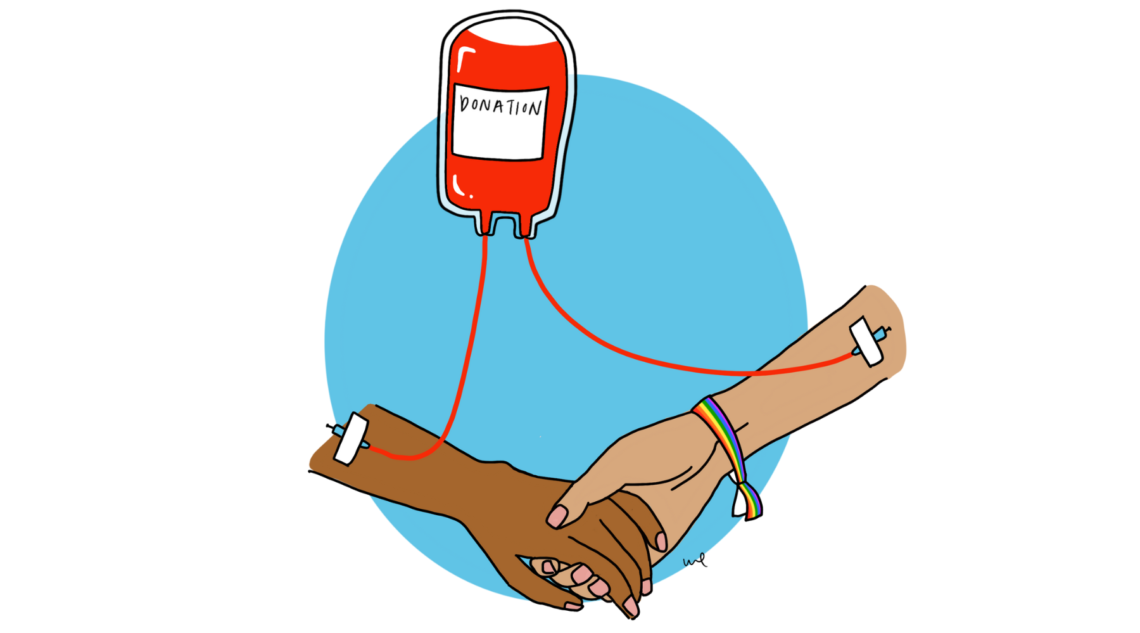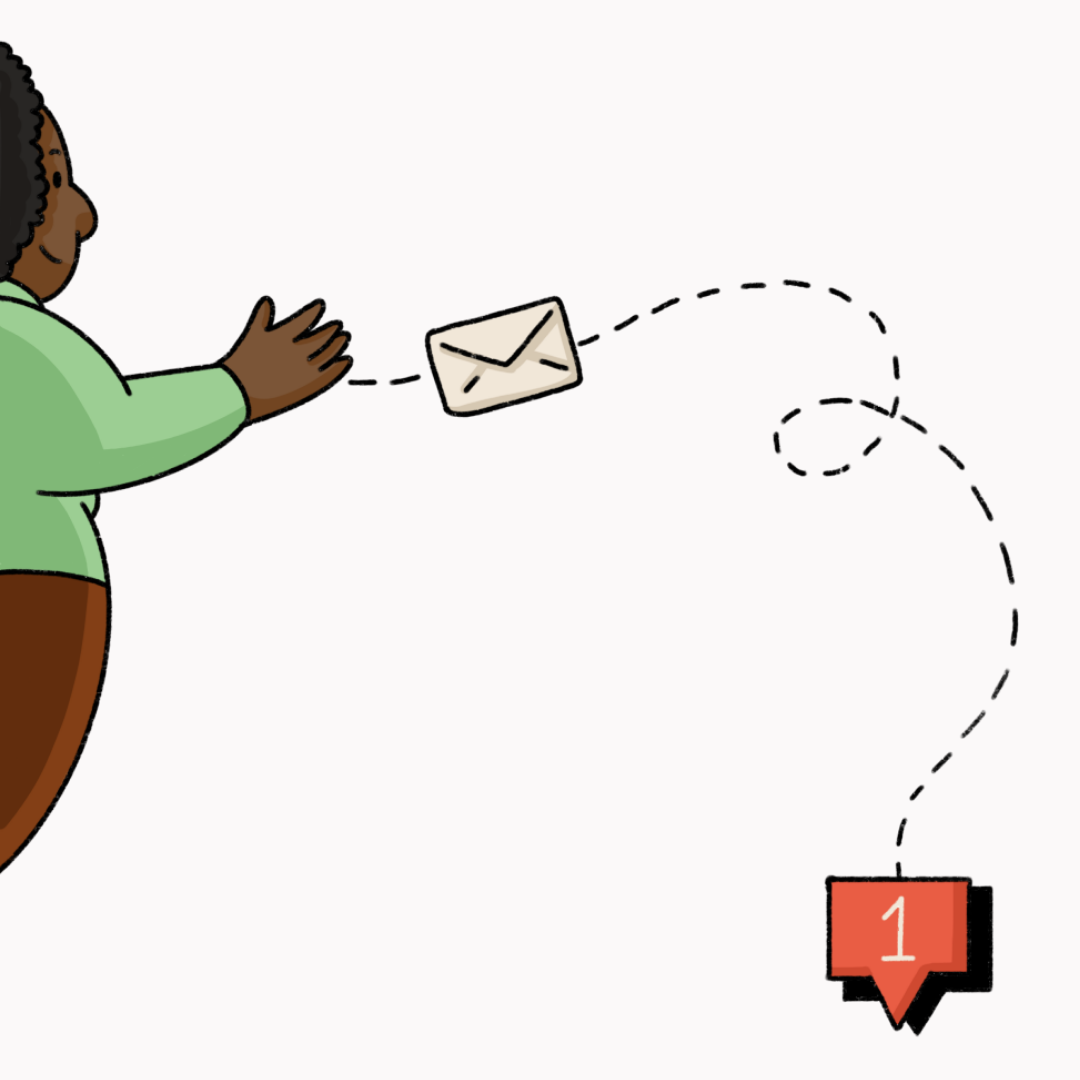Introduction:
On April 28th, Canadian health officials released a statement announcing that they have approved a request from Canadian Blood services to lift the restriction on blood donations for men who have sex with men (MSM) (1). This decision, which has been largely due to the lobbying from 2SLGBTQIA+ communities and advocacy groups, marks an important step in the right direction in putting an end to the historical discrimination of blood donation for two-spirit, gay, bisexual and queer men, trans women, and men who have sex with men. However, the new policy still contains certain limitations and continues to disproportionately affect 2SLGBTQIA+ communities, and thus there are areas for further improvements.
The blood donation ban for gay and other MSM was first imposed in 1992 after the Tainted Blood Scandal, which began as a lifetime ban. Since this time, the eligibility criteria for required abstinence periods has decreased from 5 years to 1 year to 3 months over the past ten years (2).
The new policy, which will take effect no later than September 30th 2022, will screen all potential donors interested in giving blood or plasma, regardless of their gender or sexual orientation (3). However, the new process will include a sexual behavior-based screening questionnaire, which will determine whether donors have engaged in sexual behaviors thought to put them at higher risk of sexually-transmitted/blood-borne infections (STBBI). The questionnaire will ask the potential donor whether they have had new and/or multiple sexual partners in the last 3 months. If the answer is yes then the person would be asked if they’ve had anal sex with any of these partners. If they have, they will be required to wait 3 months from when they last had anal sex to donate; If not, the person would be allowed to donate blood (3).
Steps in the Right Direction…
For decades, the blood donation policies perpetuated discriminatory practices against individuals apart of the 2SLGBTQIA+ community. The acknowledgement of this harm and the effort the Canadian Blood Services has taken to loosen regulations surrounding this ban are steps in the right direction. We acknowledge and support these efforts. At Sex[M]ed we recognize that this change in policy will result in an increased population of eligible blood donors during an ever present demand of life saving blood products that our healthcare system experiences (4).
The previous policy for blood donation was based on testing capabilities of the past, when new infections took 3 months to detect. (5). With the development and advancements of nucleic acid testing (NAT) combined with the increasing uptake in HIV protection mechanisms within the community of MSM, the decision to end this harmful and discriminatory policy not only makes sense from a purely scientific perspective, but also in the efforts to erode commonly held stigmas surrounding HIV and the queer community. Canada Blood Services, through the adoption of a sexual activity based screening tool in the new eligibility policy put forth, opens the door for more individuals to donate regardless of their sexuality, including many of those in the MSM community.
Areas Needing Improvement…
Despite the points mentioned above, Sex[M]ed remains hesitant to the realities of the policy and how it will be enforced. Though gender or sexual orientation will no longer be impediments to donating blood in Canada, the new screening questionnaire fails to fully drill down into the real mechanisms/behaviours of STBBI infection and instead still looks through a 2SLGBTQIA+ discriminatory lens such as in the following ways:
- Potential donors are only asked about anal sex but not about any other types of sex such as vaginal sex or oral sex. While studies do show higher risk of HIV contraction with receptive anal sex, all types of unprotected sex with a new partner of unknown HIV status is associated with a noteworthy risk of transmission (6).
- Potential donors are not asked about situational condom use. Across studies, consistent condom use has been shown to significantly reduce HIV transmission risk, essentially eliminating the risk of transmission across sexual acts including anal sex (7).
- By asking potential donors whether or not they have had multiple partners in the past 3 months, the screening criteria favors those who are in monogamous relations. Those who are in non-monogamous or polyamorous relationships who engage in anal sex cannot donate blood, even if these partnerships are not new. Non-monogamy comes in great variety and does not imply higher-risk sexual behaviours.*
A safe blood supply is important but due to the general ignorance surrounding non-traditional relationships that are very prominent within the 2SLGBTQIA community, this new policy doesn’t address the real vectors of blood-borne pathogen risk. It is our strong belief that if Canada Blood Services truly intended to target high-risk behaviours, and end its discriminatory policies, unprotected sex of any kind with a new partner should trigger disqualification from donation (pending the deferral period). By doing so, the policy would remain broad in scope and protection, while refraining from excluding groups, identities, and sexual behaviors that are not inherently associated with higher risk of HIV transmission.
Conclusion:
As an organization that strives to improve sexual healthcare within Canada, Sex[M]ed acknowledges our role and believes in the importance of advocating for sexual and gender minorities. As such, we welcome the new changes in the blood donation policies, however we caution that work is still needed to create a system that balances scientific knowledge and anti-discriminatory policies. While the new policy grants the ability for many MSM to now be eligible to donate blood, the policy still disproportionately affects members of the 2SLGBTQIA+ community.
We wish to express appreciation to the 2SLGBTQIA+ advocacy groups for their work in calling out these discriminatory practices and pushing for change. Furthermore, we urge other organizations and healthcare providers to provide their own opinion and commentary on the topic. Open discourse, and challenging the status quo is how we can drive the necessary improvements.
Supplementary Information:
What blood-borne pathogens are tested for in donated blood?
Blood is tested for syphilis, hepatitis B, hepatitis C, HIV-1 and 2, Human T-Cell lymphotropic virus HTLV-I and II, and West Nile Virus (8). Blood can also be tested for Chagas disease and CMV depending on risk of the donor (8).
How is donated blood tested for HIV and other blood-borne pathogens?
In Canada when blood is donated, a small amount is kept aside and is tested for several infectious diseases. Through antibody and nucleic acid testing (NAT), even small amounts of viral genetic material can be detected (9).
If the blood is tested for these infectious diseases, why is there still a risk of infection from donated blood?
When the body is infected with a virus, it takes time for the immune system to produce enough antibodies to be detected; this is called the “window period” (9). NAT significantly reduces the window period by detecting the virus before it produces mass amounts of antibodies: for HIV, NAT reduces the window period from 3 months to 9 days (9). This means that during the 9 day window period following infection, a person’s blood could be infected but test negative for HIV (this is called a false negative) (9). Because of this risk, Canadian Blood Services continues to utilize behavior-based screening questions to exclude those they believe engage in behaviors that increase the likelihood of acquiring HIV. Additionally, Canadian Blood Services states this screening reduces the risk from “infections for which there is no test” (3).
Why do people on PrEP need to wait four months after discontinuing PrEP before donating?
Another clause in the blood donation policy is that taking Pre-Exposure Prophylaxis (PrEP), to help prevent new HIV infection, is a donation contraindication due to the mechanisms that the medication takes to protect you. When taking PrEP, the HIV virus is unable to reproduce because the medication turns off the mechanisms in the body required for this (via inhibition of HIV reverse transcriptase). This however is not 100% effective and “breakthrough” infections do occur. Breakthrough infections are when a person is taking PrEP and still becomes infected by HIV. Those who are taking PrEP and experience a breakthrough infection are very difficult to diagnose at initial infection as PrEP increases the window period, and thus their blood could produce a false negative test for longer. Those who discontinue PrEP must wait 4 months to allow enough time for the drug to leave their system and allow time for the virus to reproduce (if present) to have accurate HIV test results (10). However, we believe that this waiting period should be reduced, as current studies indicate that a 3 month window is sufficient for these effects to occur (11). Canadian Blood Services suggests there is limited knowledge on how PrEP affects HIV testing and encourages continued research in this area (3).
*Sex[M]ed would like to emphasise to the public and Canadian Blood Services the importance of differentiating between various types of non-monogamy such as “don’t ask/don’t tell” (DADT), open relationships, swinging, polyfidelity, closed V’s, and triads/throuples.
References:
1. Health Canada authorizes Canadian Blood Services’ submission to eliminate donor deferral period for men who have sex with men [Internet]. Health Canada: Government of Canada. 2022 April 28. Available from: https://www.canada.ca/en/health-canada/news/2022/04/health-canada-authorizes-canadian-blood-services-submission-to-eliminate-donor-deferral-period-for-men-who-have-sex-with-men.html
2. The History [Internet]. All Blood Is Equal. Available from: https://allbloodisequal.ca/the-history
3. Am I Eligible to Donate Blood? Men who have sex with men [Internet]. Canadian Blood Services. [updated 2022 April 28]. Available from: https://www.blood.ca/en/blood/am-i-eligible-donate-blood/men-who-have-sex-men
4. Reasons to join Canada’s Lifeline [Internet]. Canadian Blood Services. Available from: https://www.blood.ca/en/ways-donate/reasons-join-canadas-lifeline
5. Asad L. One Drop at a Time: Canadian Blood Services Takes a Step Towards Listing Blood Donation Restrictions on Men who Have Sex with Men. MJLH. 2022 January 26. Available from: https://mjlh.mcgill.ca/2022/01/26/one-drop-at-a-time-canadian-blood-services-takes-a-step-towards-lifting-blood-donation-restrictions-on-men-who-have-sex-with-men/
6. Ways HIV can be transmitted. Centers for Disease Control and Prevention. U.S. Department of Health and Human Services. [updated 2022 March 04]. Available from: https://www.cdc.gov/hiv/basics/hiv-transmission/ways-people-get-hiv.html#:~:text=You can get HIV if you have vaginal sex with,get HIV during vaginal sex.
7. Smith DK, Herbst JH, Zhang X, Rose CE. Condom Effectiveness for HIV Prevention by Consistency of Use Among Men Who Have Sex With Men in the United States. JAIDS. 2015 March 01; 38(3): 337-344. Available from: https://journals.lww.com/jaids/Fulltext/2015/03010/Condom_Effectiveness_for_HIV_Prevention_by.14.aspx
8. Backgrounder: Whole Blood Key Facts. Canadian Blood Services. Available from: https://www.blood.ca/en/about-us/media/whole-blood/backgrounder-whole-blood#:~:text=Canadian%20Blood%20Services%20tests%20all,is%20done%20selectively%20as%20appropriate.
9. FAQs: Human Immunodeficiency Virus (HIV) testing. Canadian Blood Services. Available from: https://www.blood.ca/en/news-and-events/media-resources/hiv/faqs-human-immunodeficiency-virus-hiv-testing
10. Seed CR, Yang H, Lee JF. Blood safety implications of donors using HIV pre-exposure prophylaxis. Vox Sang. 2017 July; 112(5): 473-476. Available from: https://pubmed.ncbi.nlm.nih.gov/28370177/
11. Effect of HIV pre-exposure prophylaxis (PrEP) on detection of early infection and its impact on the appropriate post-PrEP deferral period. Vox Sang. 2020 September 23; 116(4): 379-387.



